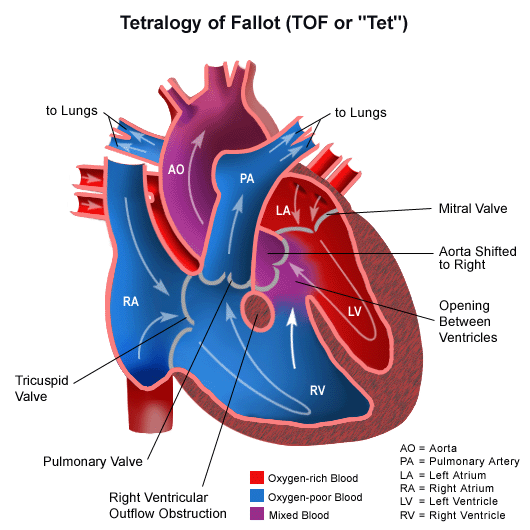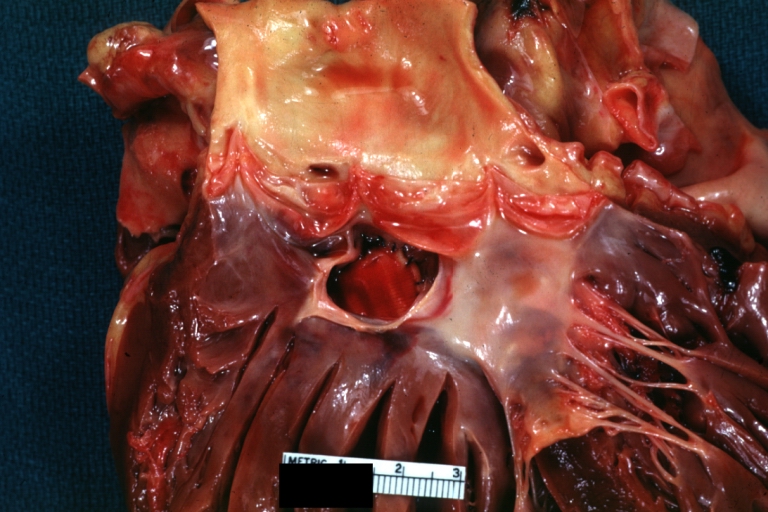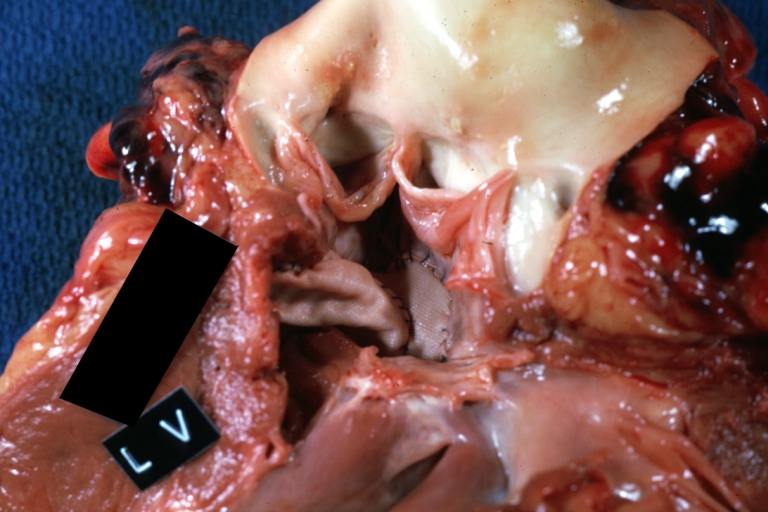Tetralogy of Fallot pathophysiology
|
Tetralogy of fallot Microchapters |
|
Diagnosis |
|---|
|
Treatment |
|
|
|
Tetralogy of Fallot pathophysiology On the Web |
|
American Roentgen Ray Society Images of Tetralogy of Fallot pathophysiology |
|
Risk calculators and risk factors for Tetralogy of Fallot pathophysiology |
Editor-In-Chief: C. Michael Gibson, M.S., M.D. [1]; Associate Editors-In-Chief: Priyamvada Singh, M.B.B.S. [2], Keri Shafer, M.D. [3]; Assistant Editor-In-Chief: Kristin Feeney, B.S. [4]
Overview
The obstruction of right ventricular outflow in tetralogy of Fallot causes blood to shunt or flow from the right to left side of heart through the ventricular septal defect. This causes right ventricular hypertrophy and eventual right sided heart failure. There is flow of deoxygenated venous blood from the right side of the heart to the systemic circulation resulting in cyanosis.
Pathophysiology

- Tetralogy of Fallot results in cyanosis, (hypoxia or low oxygenation) of the blood due to mixing of deoxygenated venous blood from the right ventricle with oxygenated blood in the left ventricle through the ventricular septal defect and preferential flow of both oxygenated and deoxygenated blood from the ventricles through the aorta because of obstruction to flow through the pulmonary valve. This is known as a right-to-left shunt. If pulmonary blood flow is dramatically reduced, pulmonary blood flow may depend on a patent ductus arteriosus (PDA) or bronchial collaterals.
- If obstruction of the right ventricular outflow tract is minimal, the intracardiac shunt may be mostly from left to right, and this may result in what is termed a "pink tet" or pink tetralogy. Although cyanosis is absent on clinical exam, laboratory testing will often show systemic oxygen desaturation.
- Children with Tetralogy of Fallot may develop acute severe cyanosis or hypoxic tet spells. The mechanism underlying these episodes is not entirely clear, but may be due to spasm of the infundibular septum and the right ventricular outflow tract. Whatever the mechanism, there is an increase in resistance to blood flow to the lungs with increased preferential flow of desaturated blood to the systemic circulation. The child will often squat during a Tet Spell to improve venous return to the right side of the heart. Squating increases the systemic vascular resistance and thereby shunts flow to pulmonary circuit. These spells can be fatal, and can occur in patients who are not cyanotic.
Associated Conditions
- Right aortic arch seen in 25% of patients
- Ostium secondum seen in 15% of patients
- Coronary artery anomalies mainly LAD from RCA or right sinus valsalve is seen
Gross Pathology
-
Tetralogy of Fallot: Gross, a good example of repaired perimembranous septal defect
-
Tetralogy of Fallot: Gross, close-up of aortic valve with subvalvular septal defect with Dacron patch (very good example)
Videos
{{#ev:youtube|b-TkE_wygT4}}

